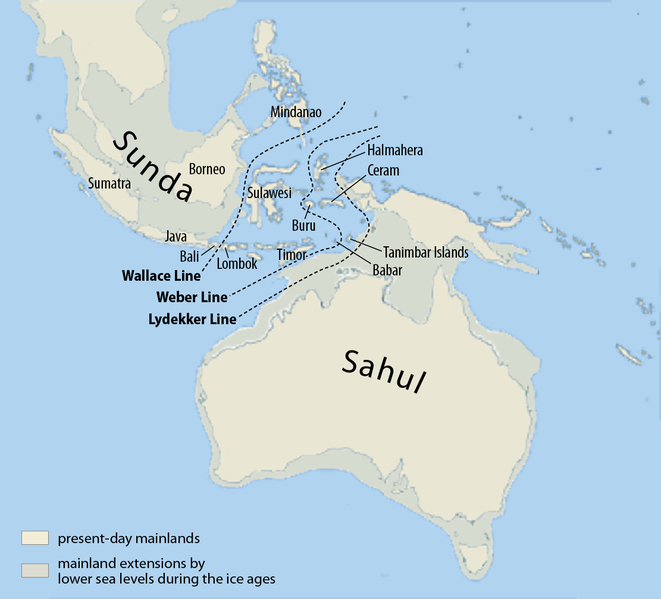
Might explain some things. (But also, note the key terminology switch from “newly discovered human species” to “ancient human relatives.”)
Three years ago the genetic analysis of a little finger bone from Denisova cave in the Altai Mountains in northern Asia led to a complete genome sequence of a new line of the human family tree — the Denisovans. Since then, genetic evidence pointing to their hybridisation with modern human populations has been detected, but only in Indigenous populations in Australia, New Guinea and surrounding areas. In contrast, Denisovan DNA appears to be absent or at very low levels in current populations on mainland Asia, even though this is where the fossil was found.
Published today in a Science opinion article, scientists Professor Alan Cooper of the University of Adelaide in Australia and Professor Chris Stringer of the Natural History Museum in the UK say that this pattern can be explained if the Denisovans had succeeded in crossing the famous Wallace’s Line, one of the world’s biggest biogeographic barriers which is formed by a powerful marine current along the east coast of Borneo. Wallace’s Line marks the division between European and Asian mammals to the west from marsupial-dominated Australasia to the east.
We don’t know very much about the Denisovans, but anthropologists have been wisely reluctant to classify them as a separate species (consider, for example, the Flores man debacle). So the media release quoted above is careful in its choice of words; the Denisovans are a “line of the human family tree” (so is your family, and mine) or “ancient human relatives.”
“The recent discovery of another enigmatic ancient human species Homo floresiensis, the so-called Hobbits, in Flores, Indonesia, confirms that the diversity of archaic human relatives in this area was much higher than we’d thought,” says Professor Stringer, Research Leader in Human Origins, Natural History Museum, in London. “The morphology of the Hobbits shows they are different from the Denisovans, meaning we now have at least two, and potentially more, unexpected groups in the area.”
I like the term “ancient human relatives.” It doesn’t pretend to more than we know, so we are much less likely to veer off course. – O’Leary for News
See also:Mysterious Denisovans were just us. In furs?
Neanderthals and Denisovans differ as much as the most extreme variation among modern humans
Latest findings show: We are all humans now, and the missing link is still missing